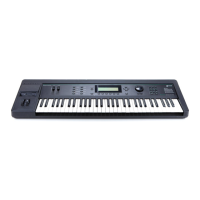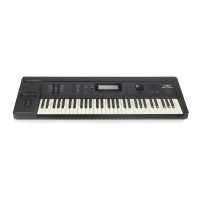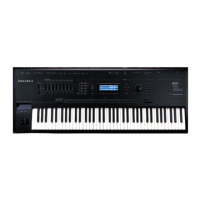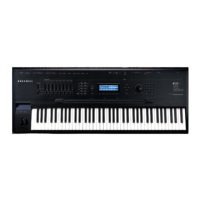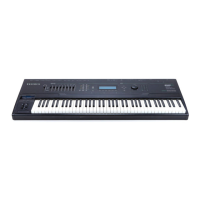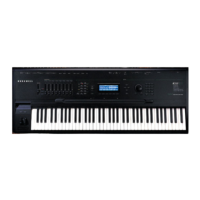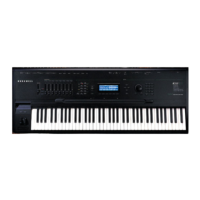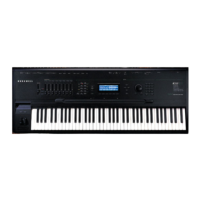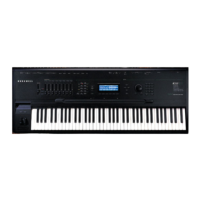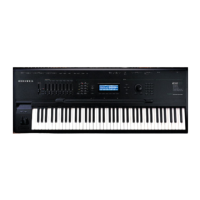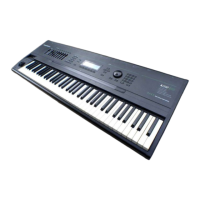Disk Mode Enhancements in Version 3
Macros
4-47
The Library parameter is remembered by the K2000 across power-cycles, via the battery backed
memory. This means that if you use this feature to load macros you only have to set it up once.
Setting macro entries to have a Library drive ID is done from the Modify Macro page (press
Disk->Macro->Modify), described later in this section.
Although the Unspecified and Library drive IDs are meant to be used with distributable media
such as CD-ROMs and floppy disks, these features will work with any supported disk drives.
Loading Selected Entries from a Macro File
It is possible to examine the contents of a macro file from any disk function page— the same way
you would open a .KRZ file to check out what objects are stored in it - by highlighting the .MAC
file and pressing Open:
Dir:\ANALOG\|||||Sel:0/5|||||Index:|||5|
|||||||||||||||||RESONANT|.KRZ||||109K||
|||||||||||||||||SYNAPSE||.KRZ||||421K||
||||File|to|load:SYNTH||||.MAC|||||.5K||
||||||||||||||||||||||||||||||||||||||||
||||||||||||||||||||||||||||||||||||||||
|Total:664K|||||||||||||||||||||||||||||
Select||Root||Parent||Open|||OK|||Cancel
The K2000 will need to read the macro file into a temporary area of internal memory, which
means there needs to be enough free RAM to accommodate it. When Open is pressed from the
Load function, a dialog similar to the MACRO page and the Save Macro page will be entered,
called the Load Macro page:
Func:LOAD|MACRO|||Sel:2/4||||Index:|||1|
||||||||||||||||||||||||||||||||||||||||
||||||||||||||||||||||||||||||||||||||||
|5:\ANALOG\MULTIVOX.KRZ||||||||200:F:|||
*5:\ANALOG\NOISE.KRZ|||||||||||200:F:|||
|5:\ANALOG\RESONANT.KRZ||||||||200:F:|||
*5:\ANALOG\SYNAPSE.KRZ|||||||||200:F:|||
Select|Check|||||||||All|||||OK||||Exit|
From the Load Macro page, you can select one or more individual macro entries for loading,
instead of having to load the entire macro. This is done using the Select soft button, identical to
the method of saving macro entries. In fact, this dialog operates identically to the Save Macro
dialog, with one exception, the Check soft button.
The Check button will cross-check all of the macro entries in this opened macro file against the
currently in-memory macro table, if there is one. Any entries in the opened macro file that are
not in the in-memory macro table will be selected when you press the Check button. The
selected macro entries can then be loaded in by pressing OK. This can be helpful to avoid
loading in duplicate files if you...
a) use Macro Record to keep a running history of files that you have already loaded into the
K2000, and
b) have a lot of macro files that load in a similar lists of files.
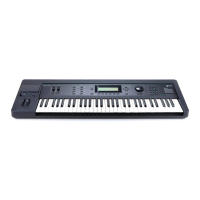
